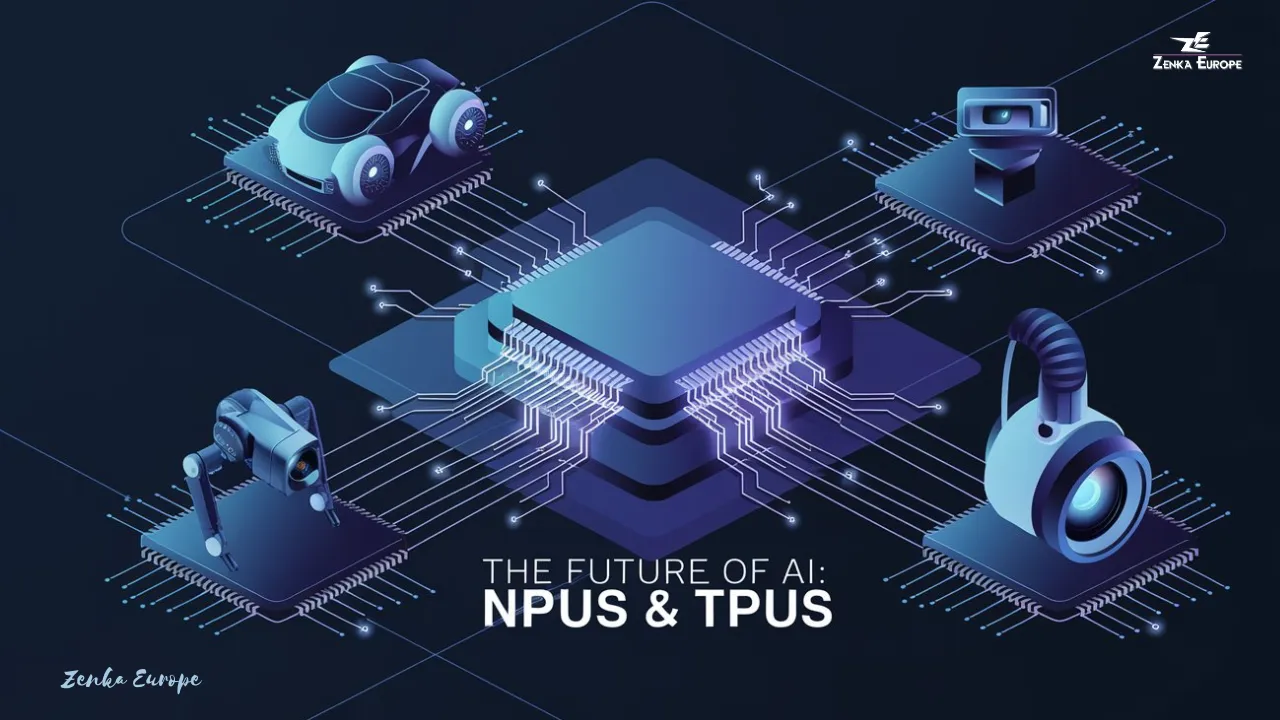
In this blog post, we’ll explore how NPUs and TPUs are transforming various sectors, the technical advantages they bring to the table, and why they are becoming critical tools in pushing AI boundaries.
NPUs are specialized hardware designed to accelerate machine learning and AI computations. They are optimized for tasks such as neural network inference and training, where traditional CPUs and GPUs fall short due to their generalized nature.
Key Features of NPUs:
First introduced by Google, TPUs are hardware accelerators specifically designed for processing large-scale tensor operations—mathematical computations that are the foundation of deep learning models. Unlike traditional processors, TPUs are optimized to handle the heavy computational loads associated with training and running deep learning models.
Key Features of TPUs:
Autonomous driving requires the integration of AI to process and interpret vast amounts of sensor data in real time. NPUs and TPUs are critical in enabling autonomous vehicles to make instantaneous decisions—whether it's detecting pedestrians, reading traffic signs, or navigating complex environments.
Example: Tesla’s use of custom AI chips, incorporating NPU-like functionality, has allowed their Autopilot system to operate with greater precision and faster reaction times compared to using conventional CPUs or GPUs.
The development of smarter, more autonomous robots is another area where NPUs and TPUs are making significant contributions. These processors enable robots to interact more intelligently with their environments, leading to advancements in industrial automation, healthcare, and personal robotics.
Example: In manufacturing, AI-driven robots powered by NPU and TPU components are improving production line efficiency, reducing errors, and operating with minimal human intervention.
From social media platforms to healthcare diagnostics, image and video recognition has become an indispensable part of modern applications. NPUs and TPUs are propelling the growth of this technology by enabling faster, more accurate image analysis, often in real time.
Example: Google's use of TPUs in Google Photos allows for near-instantaneous sorting, searching, and enhancement of images based on AI algorithms trained to recognize objects, faces, and locations.
One of the primary advantages of NPUs and TPUs is their ability to process AI workloads more efficiently than traditional CPUs and GPUs. They are specifically designed to handle the massive parallelism required in neural networks, allowing for faster computation times and reduced energy consumption.
Scalability: As AI models become larger and more complex, the ability of TPUs to scale across multiple devices ensures that these models can be trained and deployed faster than ever. This is especially important in industries like healthcare, where rapid model iteration can lead to breakthrough diagnostics.
Edge AI refers to the practice of running AI algorithms directly on devices like smartphones, IoT gadgets, and autonomous vehicles, as opposed to relying on cloud-based servers. NPUs are central to this shift as they allow these devices to process data locally, reducing latency and improving response times.
Example: Modern smartphones like the iPhone and Google Pixel come equipped with NPUs that allow for advanced features such as augmented reality (AR), voice recognition, and real-time translation, all performed directly on the device.
Both NPUs and TPUs excel in real-time applications, where low latency is crucial. Whether it's in autonomous vehicles, drones, or AI-driven gaming engines, these processors provide the computational speed necessary to handle tasks that require instantaneous decision-making.
While NPUs and TPUs represent significant advancements in AI hardware, they also pose certain challenges. Developing software that fully utilizes the power of these components can be difficult, and integrating them into existing systems often requires rethinking traditional computing architectures.
However, as AI continues to grow in importance across industries, the demand for more efficient, powerful, and specialized hardware will drive further innovation in NPUs, TPUs, and other AI accelerators.
The introduction of Neural Processing Units (NPUs) and Tensor Processing Units (TPUs) has marked a turning point in how AI tasks are handled, enabling faster, more efficient processing of complex neural networks. These AI-driven components are revolutionizing industries like autonomous driving, advanced robotics, and image recognition, making AI more accessible and practical across a range of applications.
As we move toward a more AI-centric future, the role of NPUs and TPUs will only continue to grow, providing the computational muscle required to power the next generation of AI breakthroughs.
1. What is the main difference between NPUs and TPUs?
NPUs are designed for general neural network acceleration, often used in devices like smartphones, while TPUs are specialized for tensor operations, primarily in large-scale deep learning tasks.
2. Can TPUs be used outside of Google's TensorFlow?
While TPUs are optimized for TensorFlow, they can be adapted for use with other machine learning frameworks, although this may require additional engineering efforts.
3. Why are NPUs important for edge computing?
NPUs are crucial for edge computing because they allow AI tasks to be processed locally on devices, reducing the need for cloud-based computation and enabling faster response times.
To know more, watch our video : https://www.youtube.com/shorts/sW0ubMXvN5w
Facebook : https://www.facebook.com/zenkaeurope
Twitter : https://x.com/ZenkaEurope
YouTube : https://www.youtube.com/@ZenkaEurope
LinkedIn : https://www.linkedin.com/company/zenka-europe-uab/
Instagram : https://www.instagram.com/zenka_europe